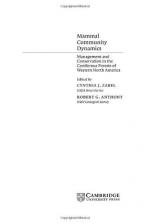|
This section contains 1,692 words (approx. 6 pages at 300 words per page) |

|
Coniferous forests are dominated by gymnosperm trees such as pines, spruces, and firs. Conifers were the first plants to evolve seeds. Gymnosperms (from the Greek words gymnos, meaning "naked," and sperma, meaning "seed") have seeds exposed to the environment on cones. In most species, male and female cones occur on the same tree, but the Juniperus (juniper) and Taxus (yews) genera have species with separate male and female trees. Male cones are smaller than female cones and produce pollen in the springtime. The larger female cones are able to be fertilized only when they are young and often unnoticeable. Most conifers rely on wind to carry their beautiful and diversely shaped pollen grains to the female cone.
The phylum Coniferophyta is organized into two orders. Older classification schemes included a third, Ginkgoales, containing only one species (Ginkgo biloba); more recent classification schemes now place Ginkgo into...
|
This section contains 1,692 words (approx. 6 pages at 300 words per page) |

|


